Morro de São Paulo is a small village on the Island of Tinharé in Bahia, Brazil. The island is famous for its tropical, laid-back vibe, groves of palm trees, clear waters, and isolated location.
Morro de São Paulo’s isolated location makes visiting challenging but the plane, boat, and bus ride are worth it.
This guide will cover everything you need to know before visiting Morro de São Paulo.
Where is Morro de São Paulo
Tinharé is only 40 miles southwest (as the crow flies) of Salvador, one of Brazil’s most historic cities, and on a clear day, you can almost see the city skyline.
The town of Valença, inland of Morro de São Paulo, is the island’s primary access point to and from continental Brazil.
To the south of Morro de São Paulo is another popular vacation spot – Boipeba.
How small is Morro de São Paulo?
It is so small that no cars are permitted. Goods are moved almost exclusively by wheelbarrow, including your luggage!
Most shops, restaurants, and hotels are located off its narrow main street – Rua da Prainha. One can easily walk the whole town and back in one afternoon.
Given the travel time and lack of cars, I expected the island to feel more rural with fewer commercial entities. I was surprised to see dozens of boutiques, restaurants, bars, tiny markets, and small hotels squeezed in every which way along Rua da Prainha.
If you’re looking for an action-packed vacation, Morro de Sāo Paulo might not be the best spot for you.
On the island, it’s all about swimming in warm ocean waters, sipping fruity beach drinks, and having a good time.
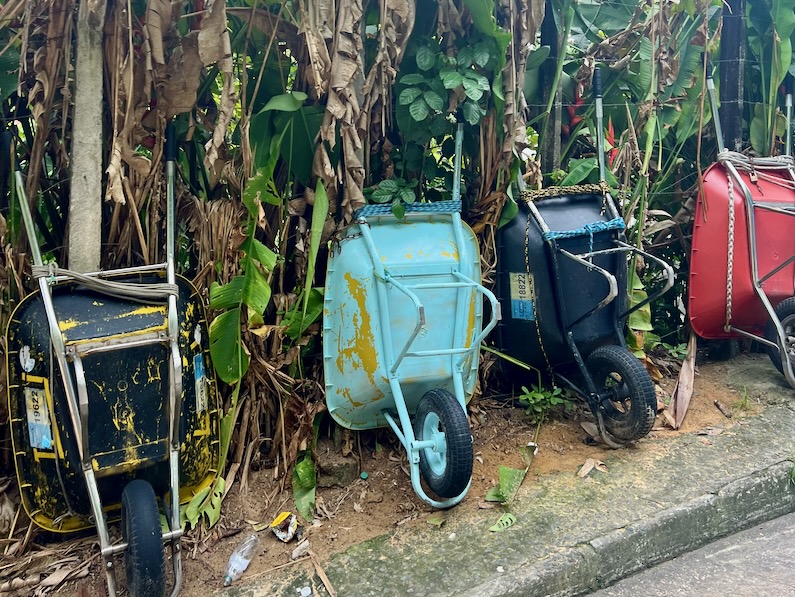
Brief History of Morro de São Paulo
Morro de São Paulo wasn’t always a trendy vacation spot. Its history is a little more intense than you’d think for an unassuming idyllic beach town.
In 1535, the Portuguese established the first colony on the island in the same location as the present-day town of Morro de São Paulo.
Over the next few centuries, Morro de São Paulo served a strategic role in helping the Portuguese defend their colonial capital of Salvador and its surrounding waters from the Dutch, French, and pirates.
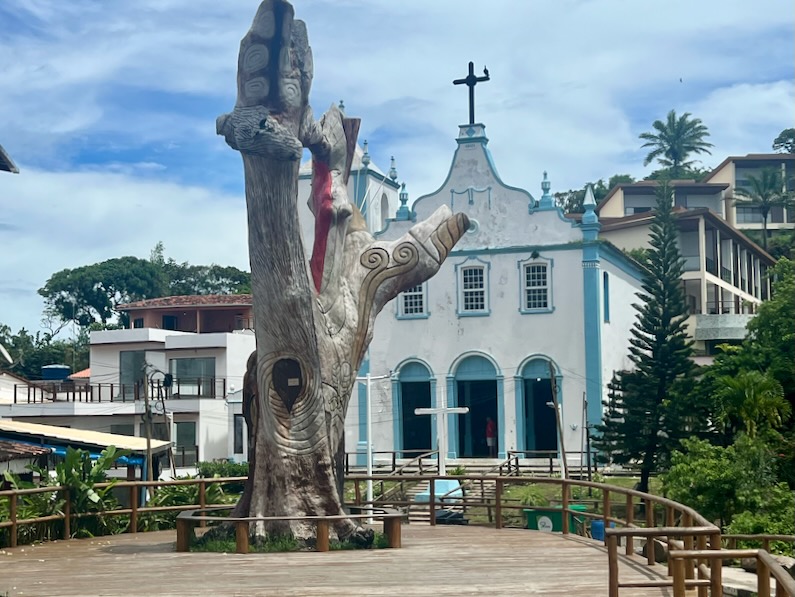
Igreja Nossa Senhora da Luz
In 1628, the island’s first church was constructed – Igreja Nossa Senhora da Luz. The church has been renovated a few times since.
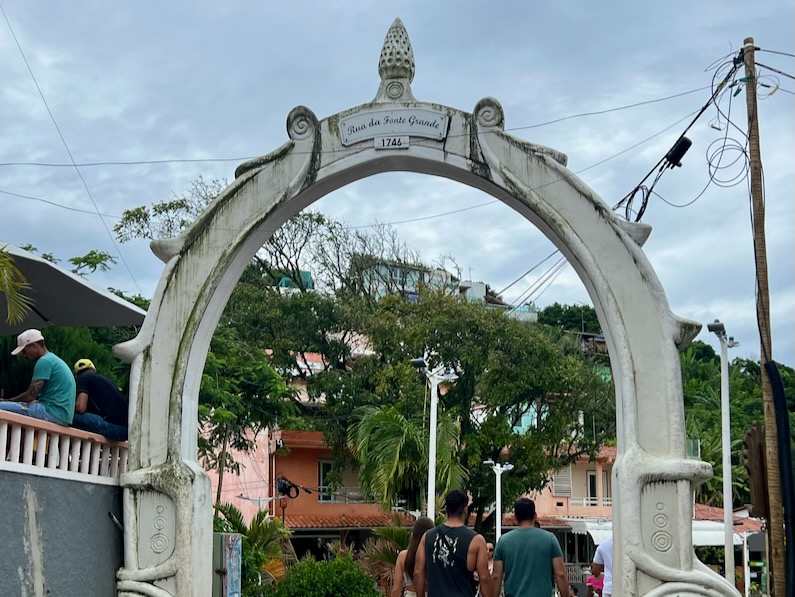
Archway leading towards Fonte Grande
In 1746 the first fresh water supply was established – Fonte Grande. The now-defunct water fountain remains a central meeting point on the island today.
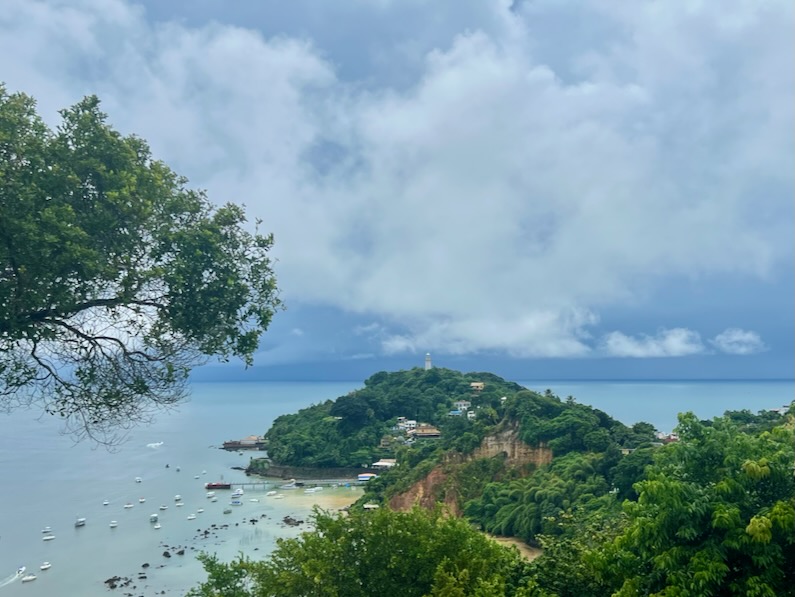
Lighthouse in Morro de São Paulo
Surprisingly, the lighthouse, Farol de Morro de São Paulo, was only constructed in 1848. It is still operational today and was one of my favorite landmarks on the island.
During World War II, Nazi submarines sunk several Brazilian merchant ships off the Bahian coast despite Brazil’s neutral stance in the war at the time. Two ships were sunk in the waters off the Primeira Praia or First Beach in Morro de São Paulo.
Widespread electricity only became available on the island in the mid-1980s. Since then Morro de São Paulo has become a growing tourist destination in Brazil.
How to Get to Morro de São Paulo
The shortcut or the long way?
Getting to Morro de São Paulo is one of the trickier parts of the trip to plan and execute, especially if you don’t speak Portuguese.
It is easiest to visit Morro de São Paulo from Salvador and there are two primary routes:
- Salvador directly to Morro de São Paulo by Catamaran, 2-3 hours of travel
- Semi-terrestrial (boat-bus-boat) from Salvador with a few stops and transits via land and water, 4-5 hours of travel
Catamaran or Semi-terrestrial?
When I first set out to book our transportation to Morro de São Paulo, I wanted us to take the catamaran. It was more expensive than the semi-terrestrial option but quicker and more direct.
However, after speaking to a few Brazilians and reading more than one unpleasant review of seasickness on the catamaran, lost luggage, and canceled trips, I concluded that the longer but more reliable semi-terrestrial option would be best for us.
Take the Catamaran if…
- If you don’t get seasick and don’t mind being near seasick people
- If you do not have a tight window between the catamaran and your flight leaving Salvador
- If you are worried about the several connection points involved with the semi-terrestrial option
Island Tour’s Semi-Terrestrial Transportation
Island Tour has great reviews online and was recommended by a few Brazilians. They also offered the option to bundle airport transportation service on our return trip at a price cheaper than Uber.
If you plan to book a transfer and airport drop-off with Island Tour, pay close attention to your flight time.
For example, we booked the 9:30 am transfer from Morro de São Paulo with airport dropoff. Before completing the booking, Island Tour stated the earliest our flight could be was 4 pm that day.
Our flight was at 5:30 pm and we were dropped off at 2:30 pm with plenty of time to catch a 4 pm flight, if that had been the case.
Many Morro de São Paulo transportation companies offer pick-up and drop-off services at hotels or the airport in Salvador. It is often beneficial to simplify your movements through a single company.
Another semi-terrestrial tour company is CASSI.
Ticket Pricing
Island Tour offers private, shared, catamaran, and semi-terrestrial transportation options.
- The Island Tour semi-terrestrial ticket from Salvador to Morro de São Paulo costs R$130 (May 2024)
- The return semi-terrestrial ticket from Morro de São Paulo to the Salvador airport cost R$150 (May 2024)
What to expect on the semi-terrestrial transfer to Morro de São Paulo
- Departed our hotel in Pelourinho at 9:15 am to arrive at the Terminal Turístico Náutico da Bahia at 9:25 am
- Boarded a large boat to Terminal Marítimo de Vera Cruz at 9:40 am and embarked at 10 am for Vera Cruz
- Arrived in Vera Cruz at approximately 11 am and walked 5 minutes to shuttle van pick up location
- The shuttle van ride was approximately 2 hours
- Arrived in Valença at 1:15 pm, paid a R$0.60 pp tax (2023), then took a 15-minute “speed boat” ride to Morro de São Paulo
- After disembarking in Morro de São Paulo, we paid a R$30 pp (2023) tourism tax* and met our hotel golf car shuttle driver at the Fonte Grande meeting point. It was almost 2 pm by the time we unloaded our bags in our hotel room
*Important: Keep the receipt from the Morro de Sao Paulo tourism tax as it will be collected when you depart for Salvador. Also if you happen to do a boat day-trip from Morro de São Paulo, you will need to carry the receipt with you to avoid paying twice.
Returning to Salvador, we took a vehicle and passenger ferry from Vera Cruz to Salvador. This ended up being a pretty cool experience as the ship was enormous. The trip was quicker and smoother than on the smaller passenger boat leaving Salvador.
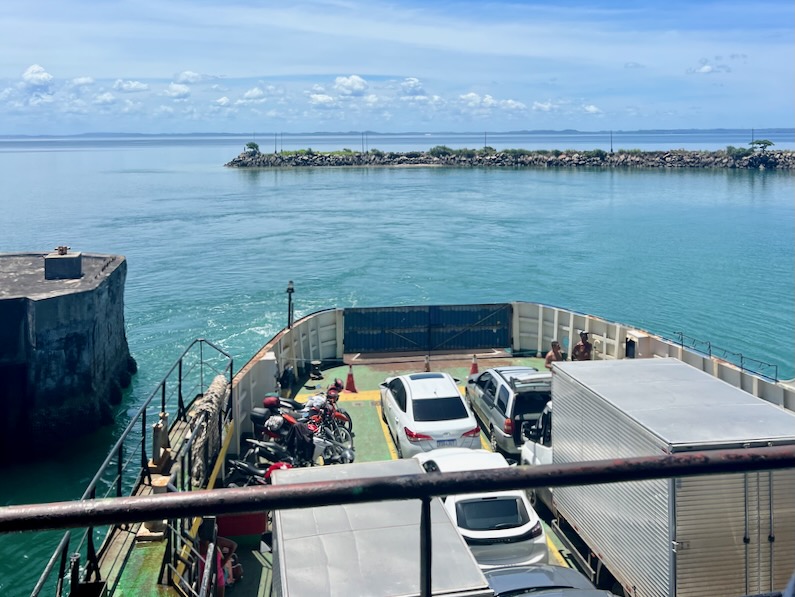
Large Ferry from Vera Cruz to Salvador
More on the Transfer from Salvador to Morro de São Paulo
We traveled to Morro de São Paulo on a Saturday morning and there were a lot of other tourists also traveling – however, I believe we were the only non-Brazilians in our Island Tour group.
Knowing Portuguese was a huge advantage to be able to understand directions because multiple boats and vans were operating similar tours without clear signage.
Although Island Tour had an army of workers all wearing maroon shirts who accompanied our group along the way, one or two times we found ourselves confused as to which worker we needed to follow and which van we were supposed to take. I noticed it wasn’t just us who were confused, but also Brazilians.
If you don’t know Portuguese, I would let the Island Tour guide know at check-in so they can ensure you know where to go when directions are being yelled out. We mostly followed the pack, which proved to be a successful tactic.
There will be some waiting in lines, at times in the direct sun and heat. It’s a good idea to dress in cool clothes, bring a hat, and apply sunscreen ahead of the transfer.
There will be opportunities to use the restroom and purchase drinks and snacks during the transfer.
Looking for a place to stay in Salvador before visiting Morro de São Paulo? Read my Salvador article for hotel and neighborhood suggestions in Salvador, Bahia.
How Many Days in Morro de São Paulo
The right number of days in Morro de São Paulo depends on how you want to spend your time.
- Do you want to party and relax at only the first and second beaches?
- Do you want to scuba dive or snorkel?
- Do you want to ride horses or ATVs?
- Do you want to go for a boat ride?
These are the main activities on the island and some demand more time than others, especially scuba diving.
We were limited to only 3 days on the island, and 1 day we reserved a half-day of scuba diving.
Unfortunately, a few days prior a big storm passed through and the water visibility was terrible for our entire stay. Thus we were unable to dive since the next scuba boat didn’t go out until the day of our departure.
If scuba is a priority, then I would build in an extra day or two in case the dive boats aren’t able to go out. You also need to consider the amount of time between when you dive and when your flight is scheduled.
Another factor to consider is the time and energy it takes to get to Morro de São Paulo from Salvador.

Recommended Number of Days in Morro de São Paulo
- 3 days, 2 nights: 3 days is enough time to explore the town, relax at the beach and do one other activity. You do not have much wiggle room for bad weather and you might feel like you are moving the entire trip.
- 5 days, 4 nights: 5 days allows for three whole days to soak up all that Morro de São Paulo has to offer and leave you wanting to return for more fun.
- 7 days, 6 nights: With 7 days, including five totally uninterrupted days on the island, you will have more than enough time to unwind and have your fill of adventure.
When to Visit Morro de São Paulo
Like Salvador, Morro de São Paulo’s climate ranges from warm to hot year-round.
September through February offer the hottest and driest weather with highs in the upper 80’s. You can still expect a rainstorm or two during the summer months.
The rest of the year, March through August, will still be warm with highs in the mid to upper 70s.
Visiting in March
We visited during shoulder season, at the end of March.
When we arrived, it was obvious the island had just received substantial rainfall the previous day as there were still streams of water flowing down the narrow side streets from the hilltops.
While it wasn’t raining anymore, the air was wet and heavy as the sun struggled to appear.
The next morning, while walking to breakfast, we got caught in a heavy downpour. Almost immediately the main street, Rua da Prainha, began to flow with water.
Luckily it was a quick passing storm and we only had to seek cover under a store awning for 10 minutes.
Rain like this seems to just be part of life on the island. Locals wear Havaianas and carry umbrellas regularly, always prepared for the next rain shower.
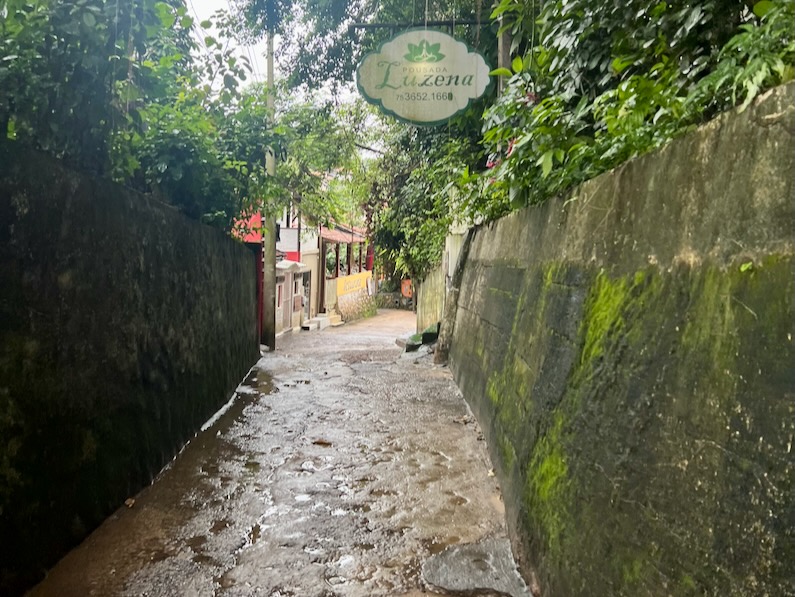
Narrow streets of Morro de São Paulo
Where to stay in Morro de São Paulo
With over 100 lodging options on the island, choosing the right one is a daunting task.
An easy way to narrow down the search is to determine which beach or praia best matches the trip experience you want.
Beaches in Morro de São Paulo
The beaches in Morro de São Paulo are easy to remember. They’re simply referred to their order on the island:
- Primeira Praia or First Beach
- Segunda Praia or Second Beach
- Terceira Praia or Third Beach
- Quarta Praia or Fourth Beach
- Quinta Praia or Fifth Beach
First Beach is closest to the town center while Fifth Beach is the furthest.
Primeira and Segunda Praias
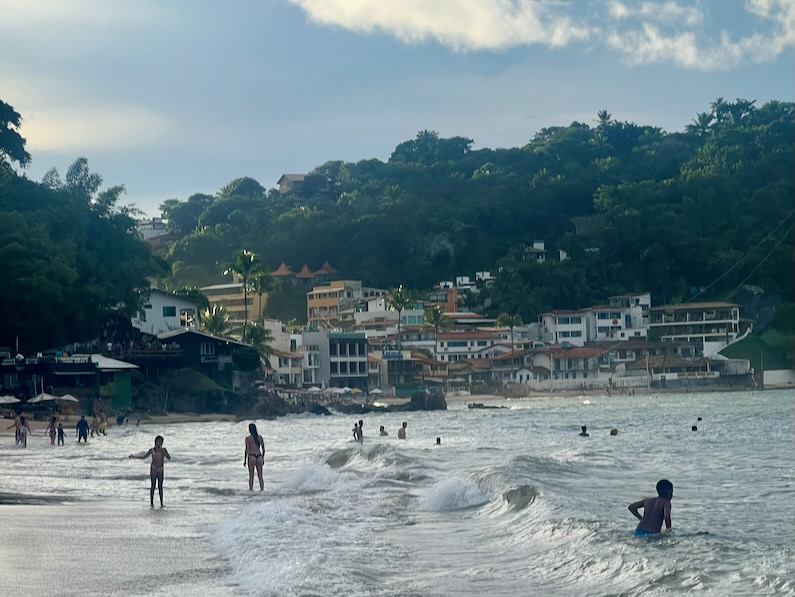
First Beach in Morro de São Paulo
These beaches are the epicenter of the party and beach scene.
It is also where the majority of the small pousadas and medium-sized hotels are located.
The beachfront is lined with restaurants, bars, shops, and hotels. There is an outdoor gym, and volleyball courts along with chairs, umbrellas, and cabanas for rent.
One nice feature is the boardwalk that weaves through all the mayhem so you don’t have to walk in the sand.
Who should stay here:
- If you want to be in the middle of the party scene
- If you are looking for an affordable hotel rate
- If you don’t mind the noise at night
- If you are looking to meet people during
Recommended options:
Pousada Villa Amado
One Beach Boutique Hotel
Pousada da Torre
Pousada Bahia Bella
Pousada Bahia Tambor
Le Terrace Praia
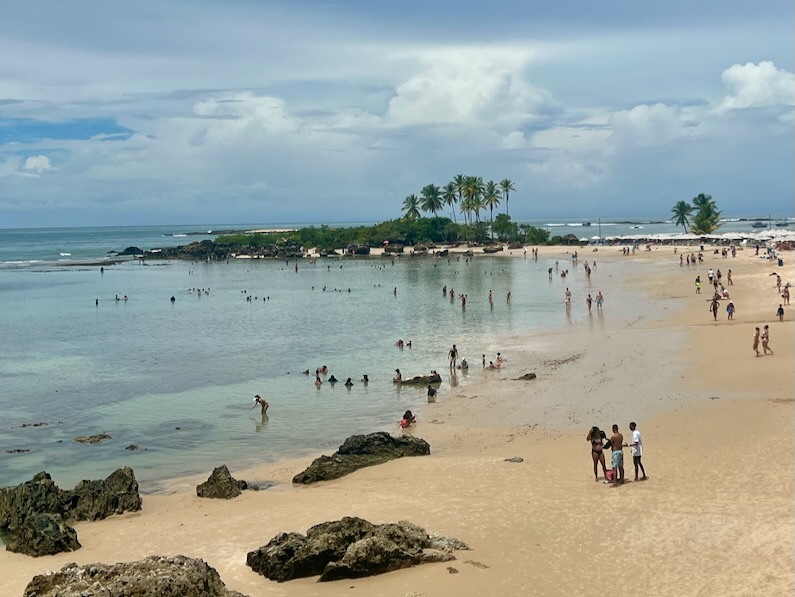
Second Beach in Morro de São Paulo
Terceira Praia
Things start to quiet down once you leave Second Beach towards Third Beach.
Third Beach is narrow but chances are your hotel will have a nice pool to enjoy. You are also only a 5-minute walk to the wider Second Beach or an 8-minute walk to Fourth Beach.
Who should stay here:
- If you want to stay at a larger, more resort-like hotel with a pool and amenities
- If you want to be close to the action but also enjoy some quiet
- If you don’t mind being a 12-minute walk from the town center
A few options:
Pousada Minha Louca Paixão
Village Paraíso Tropical
Pousada Caeira
Villa dos Corais Pousada
Aimorés Pousada
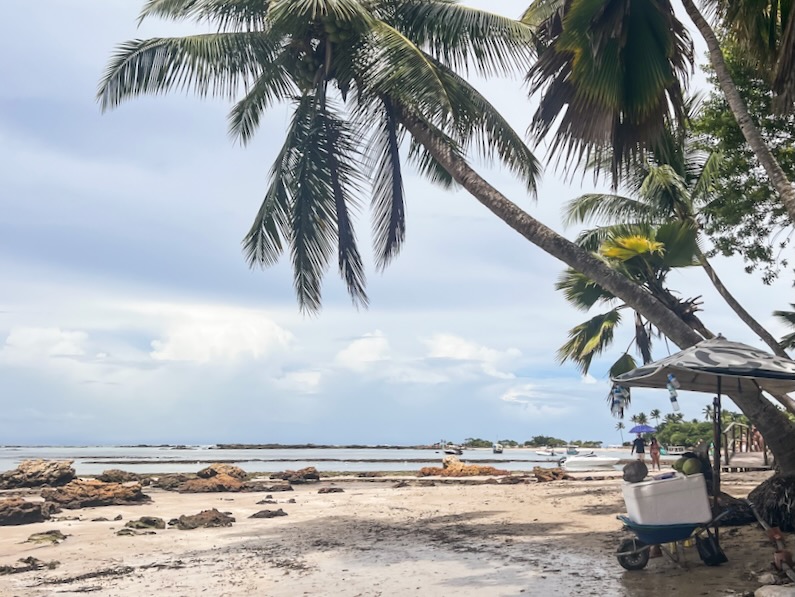
Third Beach in Morro de São Paulo
Quarta and Quinta Praia
Once you pass Third Beach, a grove of Bahia’s famous palm trees begins to come into view. The scene here is all about nature and the natural pools of ocean that come and go as the tide changes.
While there are still a couple of bar kiosks on the sand, you won’t find many restaurants outside the hotels down this way.
Who should stay here:
- If you are looking for the remote Boipeba experience but in Morro de São Paulo
- If you want to hang mostly at your resort hotel and only plan to go into town one or two times
- If you are looking for a super relaxing island vacation
A few options:
Patachocas
Hotel Porto Do Zimbo
Hotel Karapitangui
Hotel Vila dos Orixás
Something to consider when booking a hotel at Third through Fifth Beaches is the distance from where you are dropped off by boat to your lodging.
Remember there are no cars on the island to transport you or your luggage to your hotel.
After you pay the tourism tax and officially enter the island, you will notice people with shirts that identify them as city-approved helpers to transport luggage. They will be waiting with wheelbarrows and will offer to carry your luggage to your hotel for a small fee.
I would check with your hotel first to make sure they don’t offer luggage transport fees with their rate.
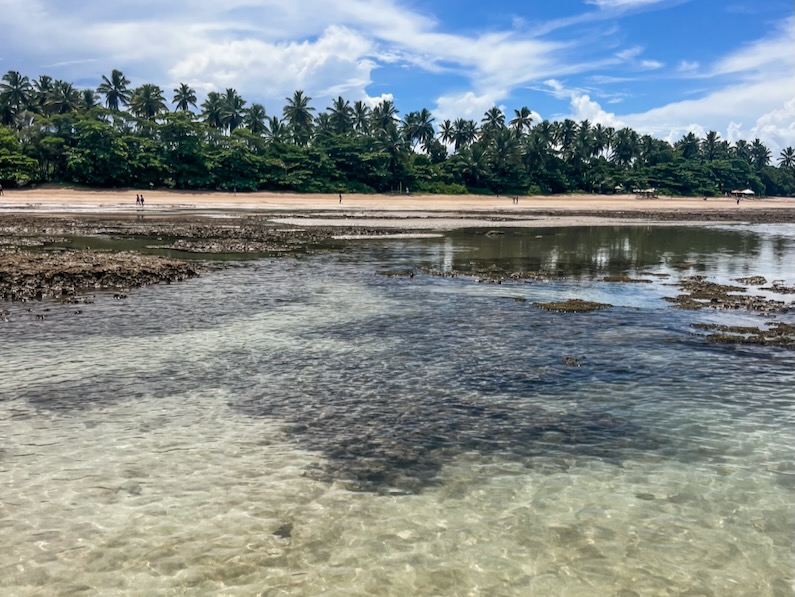
Fourth Beach in Morro de São Paulo
Villa Giulia in Morro de São Paulo
For our lodging in Morro de São Paulo, we chose a slightly different experience than described above.
I knew we didn’t want to be in the thick of things at First and Second Beach but I also didn’t want to pay for a more expensive resort down at Third and Fourth Beaches.
We decided to reserve a small apartment with Villa Giulia through Airbnb for under USD 100 per night.
The biggest draw to Villa Giulia was the amazing views of the ocean, island, and lighthouse.
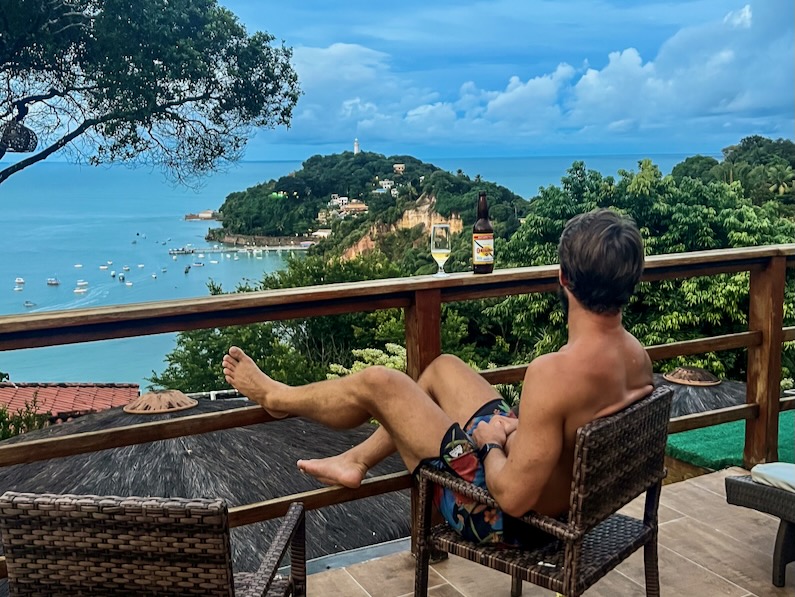
Views from private deck at Villa Giulia
In exchange for what I would call the best view in Morro de São Paulo, our Airbnb was a 12-minute walk to Fonte Grande and a 20-minute walk to First and Second Beach.
Villa Giulia offers a golf cart service from the entrance of the villa to Grande Fonte. They charged R$5 for this service. We used the golf cart when we first arrived with our luggage but chose to walk the rest of our stay.
Villa Giulia is located west of the town center and sits on a hill across from the main residential areas.
Our walk to the beach from the villa was almost the same as the locals’ commute from home to work. This offers a different perspective of the island compared to the areas down by the beaches.
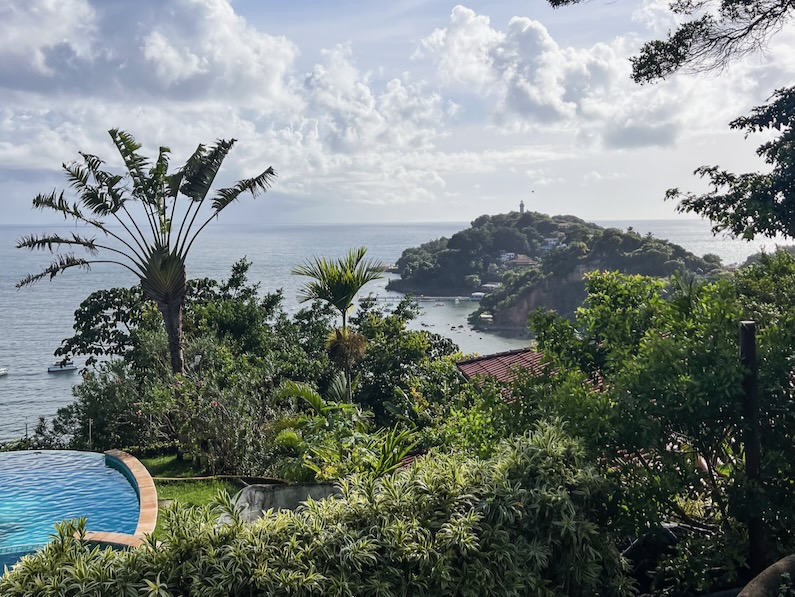
Views from private deck at Villa Giulia
Where to Eat in Morro de São Paulo
There are a ton of restuarnts, cafes, and bars in Morro de São Paulo. This list just skims the surface and includes restaurants we ate at or considered eating at during our stay.
Don’t leave without trying a Caipirinha served in the famous Bahian cocoa fruit.
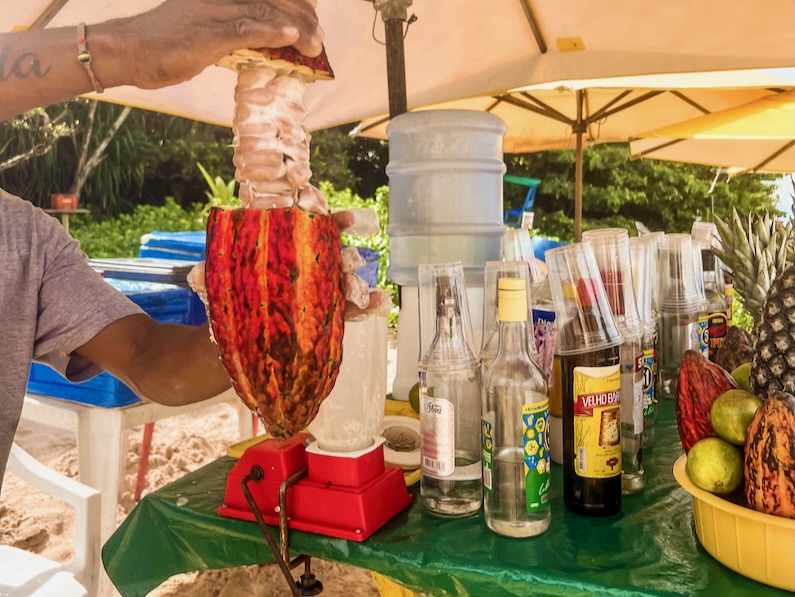
The cocoa fruit in Morro de São Paulo
The following restaurant recommendations are pinned on the Google map above.
Breakfast:
Café do Morro
Café da Fonte
Sambass Café
Lunch:
Papoula Culinaria Artesanal
Porto 23 Beach Bar e Restaurante
Restaurante Pedra sobre Pedra
Bar & Restaurante PISCINA
Maré Bar & Grill
Dinner:
Restaurante Aromas
Osiris Cervejaria
Toca do Morcego
Restaurante Basílico
Bossa Nova Bistrô
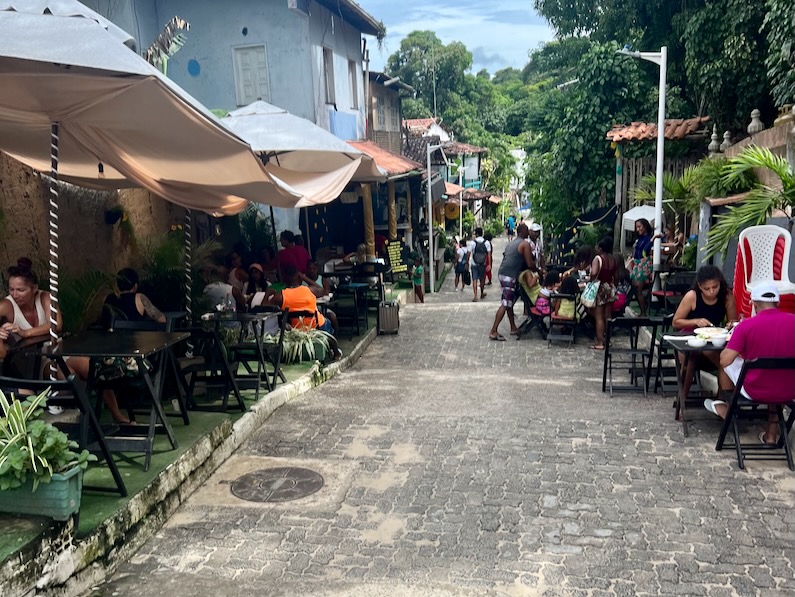
Top 10 things to do in Morro de São Paulo
- Party and relax at First and Second Beaches
- Walk from First Beach to Fourth or even Fifth Beach
- Scuba dive or snorkel
- Rent ATVs
- Go horseback riding at Fourth Beach
- Take a boat tour of the island
- Ride the zipline or tirolesa down to First Beach from the lighthouse
- Hike up to the lighthouse and other viewpoints
- Check out the Morro de São Paulo Fort
- Shop at the many beachwear boutiques
3-day Itinerary in Morro de São Paulo
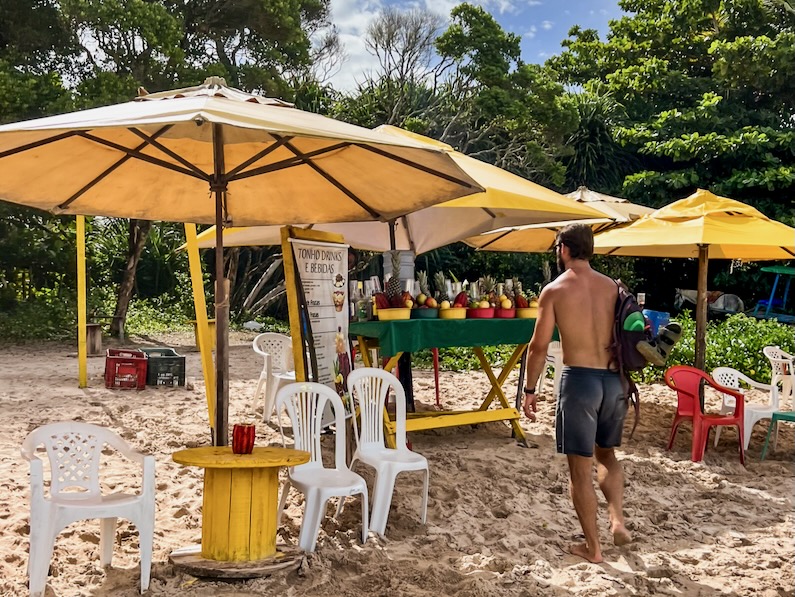
Our primary reason for traveling to Morro de Sao Paulo was scuba diving. We worked with the dive company CIA do Mergulho on the island to organize our dives in advance.
They were very communicative during the whole process. Unfortunately, due to circumstances out of everyone’s control (the weather), we could not dive on Day 2 as planned.
Below is more or less how we spent our limited time enjoying Morro de São Paulo.
Day 1
Arrive at 2 pm, check-in to Villa Giulia
Walk down to First Beach
Lunch and drinks at Porto 23 Beach Bar e Restaurante
Hangout at Second Beach
Window shop on the walk back to Villa Giulia
Dinner and beers at Osiris Cervejaria
Day 2
Watch the sunrise from Villa Giulia
Walk to breakfast at Café do Morro
Hike up to Lighthouse and viewpoints
Leisurely walk First Beach to Fourth Beach
Souvenir shop on walk back through town
Watch the sunset from Villa Giulia
Dinner at Cantina Barolo (since closed)
Day 3
Watch sunrise at Villa Giulia
Walk to breakfast at Café do Morro
Depart Morro de São Paulo at 9:30am
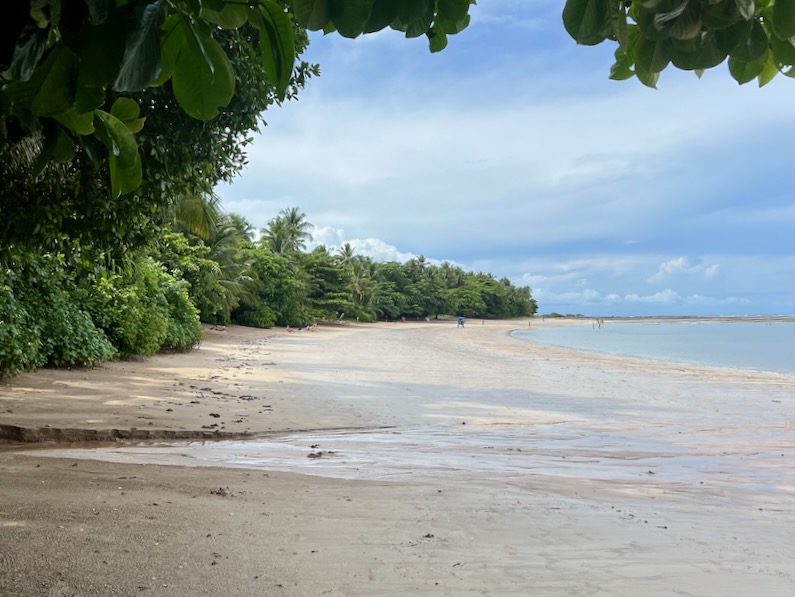
Is It Worth the Effort to Get to Morro de São Paulo?
It’s true, there are somewhat easier to visit and equally as beautiful beaches in Brazil.
Just do a quick Google search of Fernando de Noronha, Porto de Galinhas, Trancoso, Maragogi, Jericoacoara, Ilha Grande, or Floripa. Brazil is lined with gorgeous beaches.
However, if you are visiting Salvador and have a few extra days to spare, Morro de São Paulo is a superb trip add-on.
Visiting both Salvador and Morro de São Paulo on a trip to Brazil is the perfect way to learn about Brazil’s colonial history and cultural heritage in Salvador while also having the chance to enjoy some of its most beautiful beaches in Morro de São Paulo.
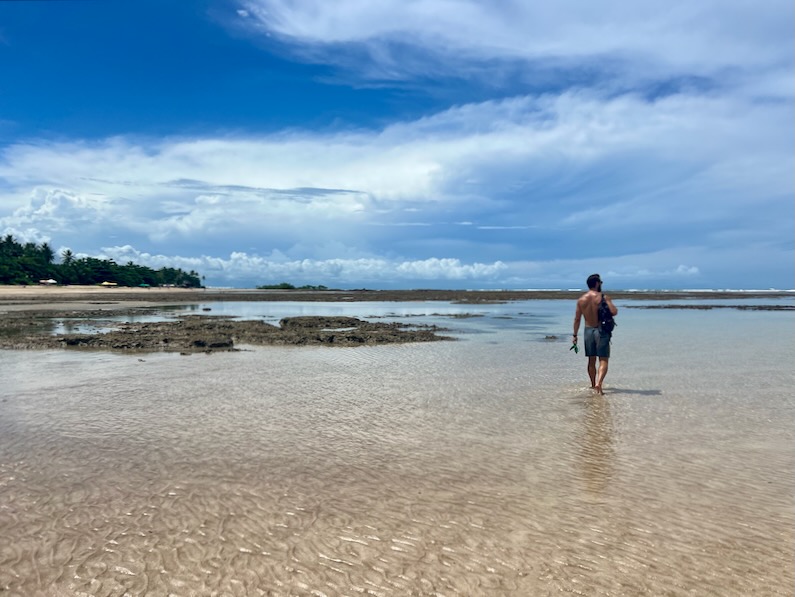
Practical Information for Visiting Morro De São Paulo
Currency:
Almost all official establishments on the island accept credit/debit cards and PIX (Brazil’s more official version of Venmo). It’s always best to have some cash for the smaller drink and food kiosks on the beach.
Safety:
In general, walking around Morro de São Paulo is very safe. We never experienced any uncomfortable situations on the street or at the beach.
We openly used our phones and didn’t need to think twice about where our wallets were.
I would hesitate to leave valuables unattended at the First and Second Beaches. These beaches are typically crowded with lots of people coming and going.
We did feel comfortable going for a swim at Fourth Beach with our beach bag unattended in the sand and noticed most other tourists were doing the same.
Medical care:
When traveling to an isolated area travelers accept the risk that there might not be adequate medical attention readily available if there were to be an emergency.
If you have a medical condition that is very high risk or if you recently had to seek medical care in a hospital, Morro de São Paulo might not be the best beach vacation spot for you.
There is an ambulance on the island, but it is a retrofitted golf cart. The main medical clinic is near the building where you pay the tourism tax upon entry to the island.
There is a small airport and helipad on the island. If the emergency were dire, you could be airlifted to Salvador.
Investing in travel health insurance is always a good idea.
A story about a medical emergency during our visit to Morro de São Paulo:
During breakfast at Café do Morro, a French tourist with his wife and daughter suddenly passed out in his chair. At the time there were about 8 other people in the cafe.
Panic ensued as the wife yelled for help and tried to wake her husband.
Luckily, a client in the cafe happened to be a doctor. He was able to perform CPR and a sternum rub, possibly saving the man’s life.
In the meantime, my husband ran outside to yell that there was a medical emergency, and a resident next door called for the golf cart ambulance.
The ambulance arrived within minutes. An hour later we saw the family walking out of the island’s health clinic or Posto de Saúde and the man appeared to be in good condition.

Language:
As with other touristy areas of Brazil, you can usually get by with a mix of English, Spanish, and Portuguese. There are many Argentine expats working in Morro de São Paulo.
Israelis have been traveling to Morro de São Paulo for many years seeking relaxation and a place to let loose following their military service commitment.
More recently, the number of Israeli tourists has increased following an Israeli comedy series filmed on the island in 2017. Visitors will notice a few Israeli flags flying on the island and signage in Hebrew.
Cell phone service:
Service is surprisingly steady and dependable throughout most of the island. I even had service towards Fourth and Fifth Beaches.
A long weekend in Morro de São Paulo goes perfectly with a trip to Salvador, Brazil!
Visiting both Salvador and Morro de São Paulo is the perfect way to learn about Brazil’s colonial history and cultural heritage while also having the chance to enjoy some of the county’s most beautiful beaches in Morro de São Paulo.
To learn more about visiting Salvador, Brazil, check out my post: 3 Days in Vibrant Salvador, the First Capital of Brazil.
More amazing places to visit in Brazil

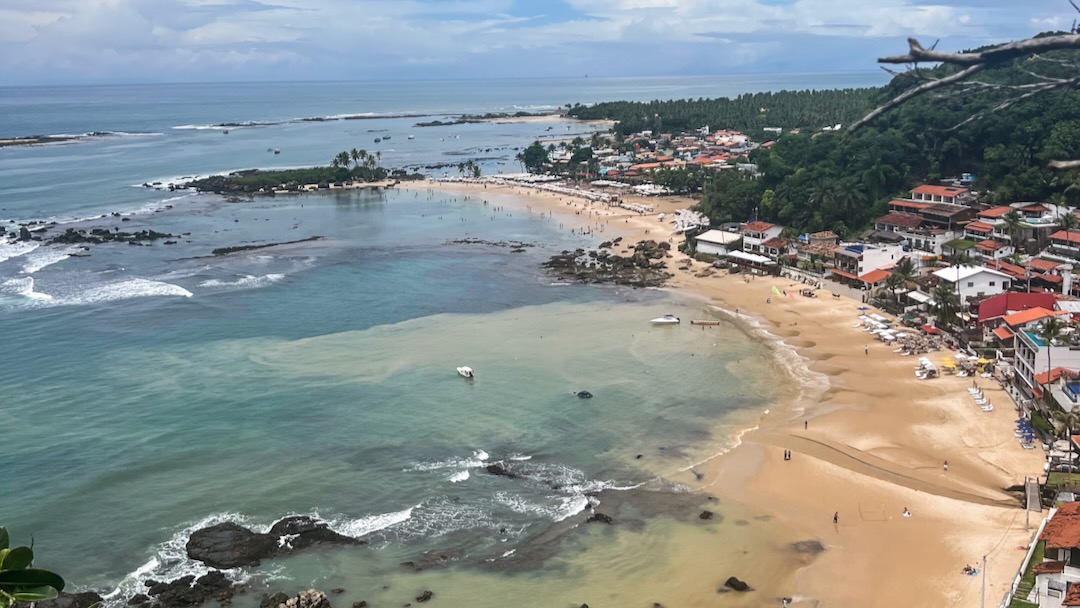
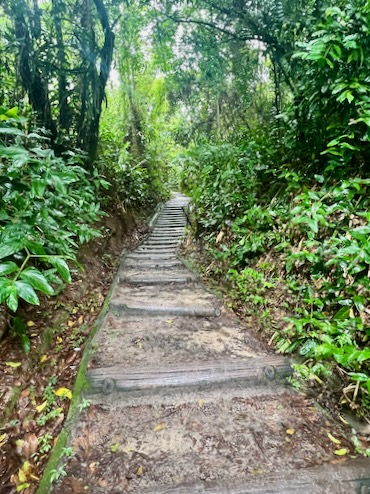

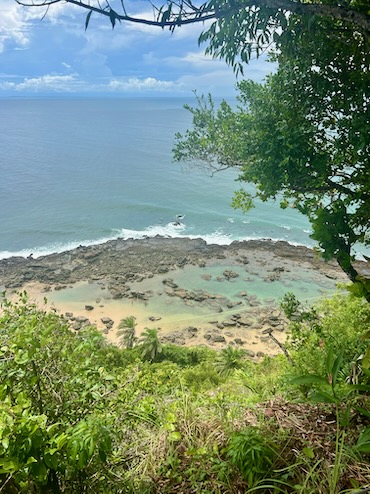
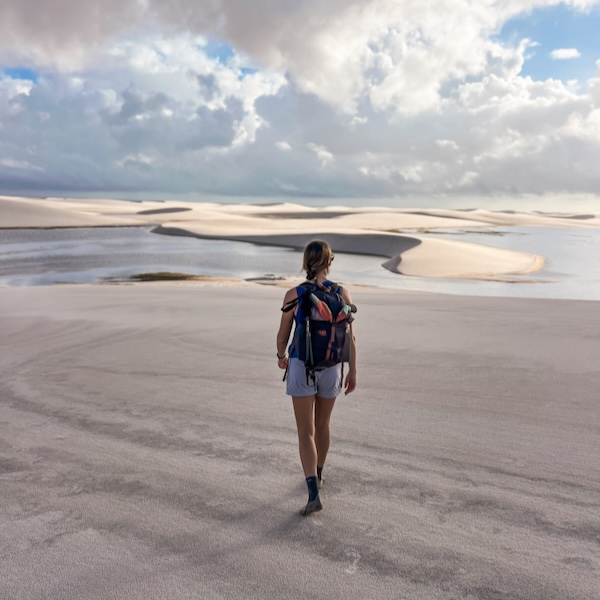


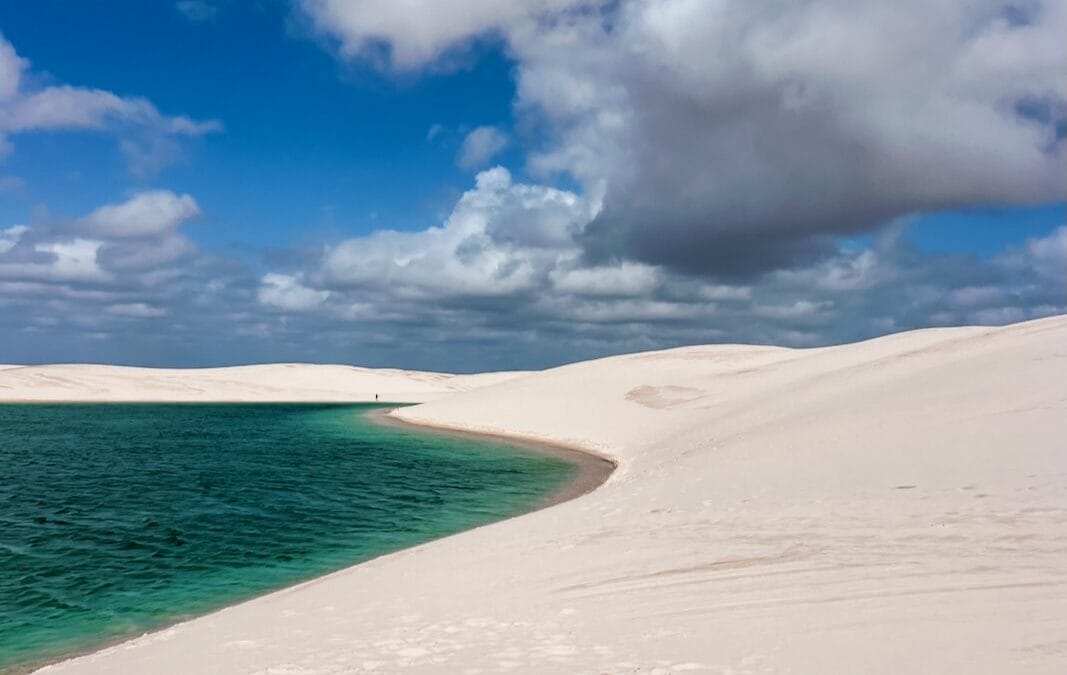
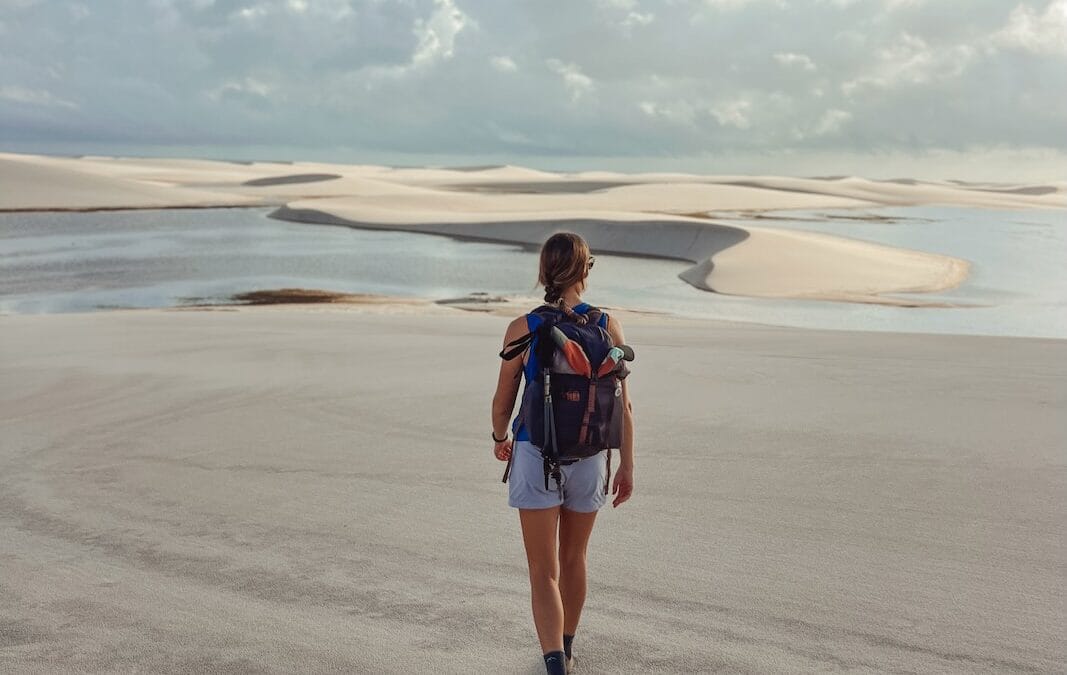
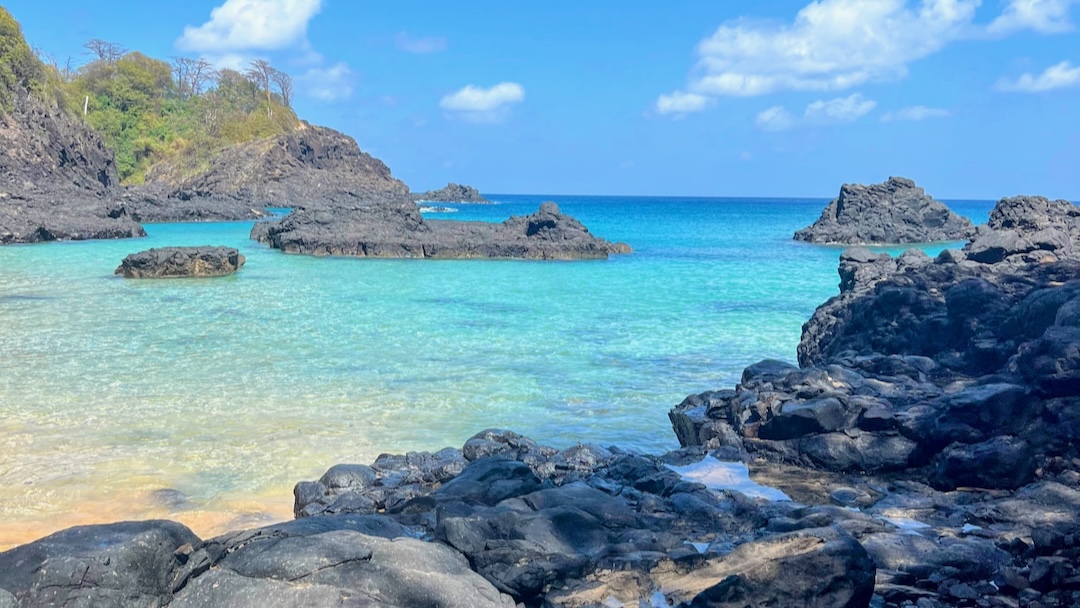
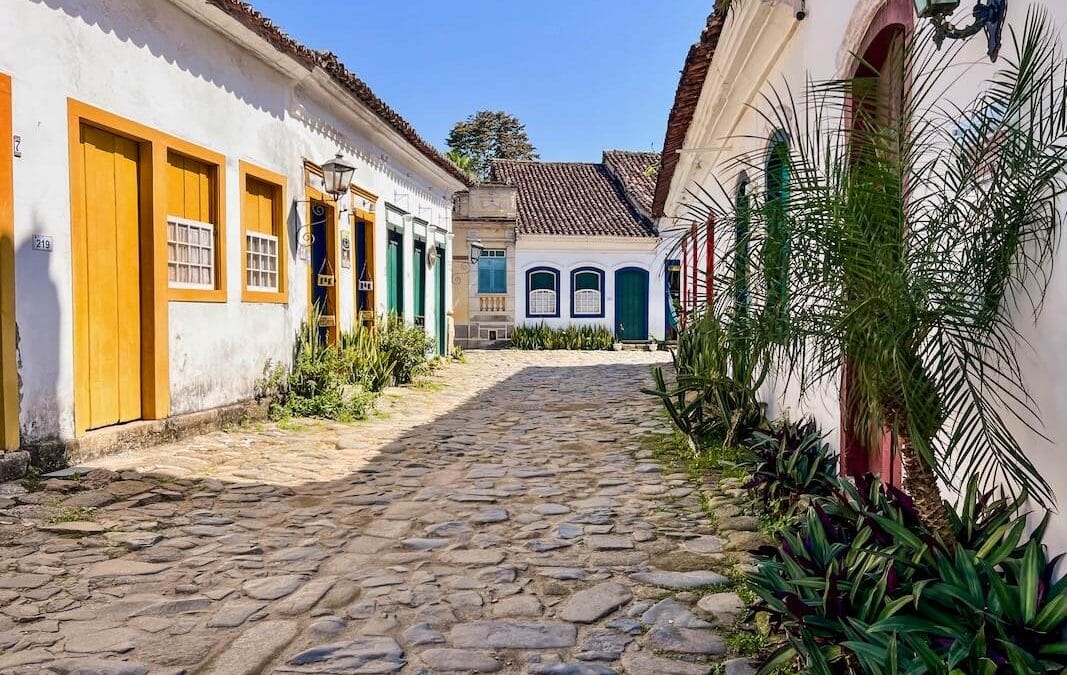
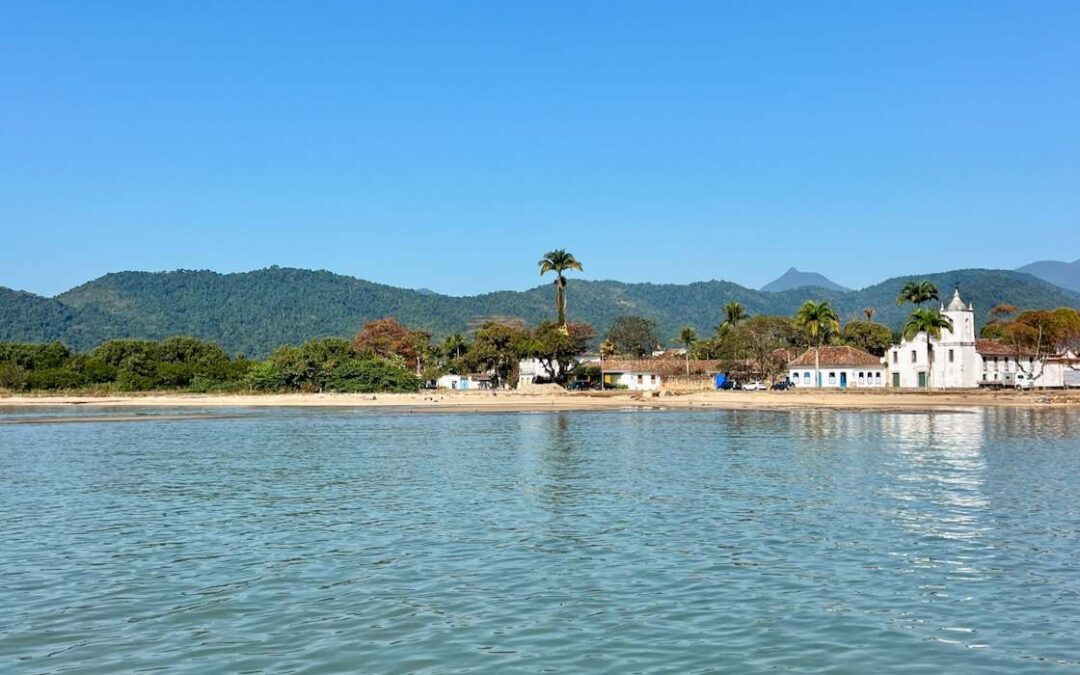
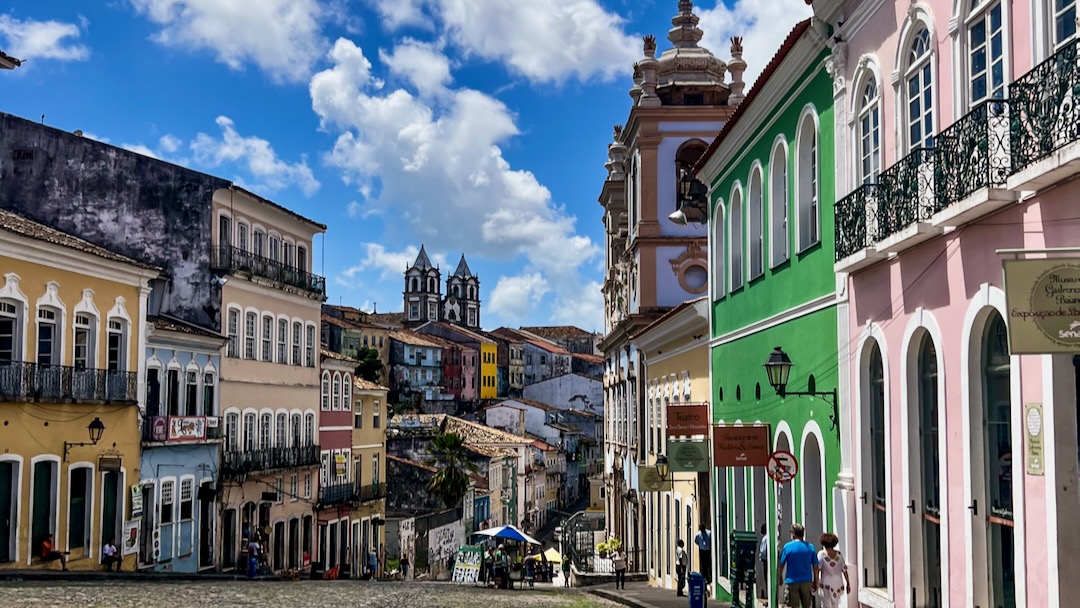
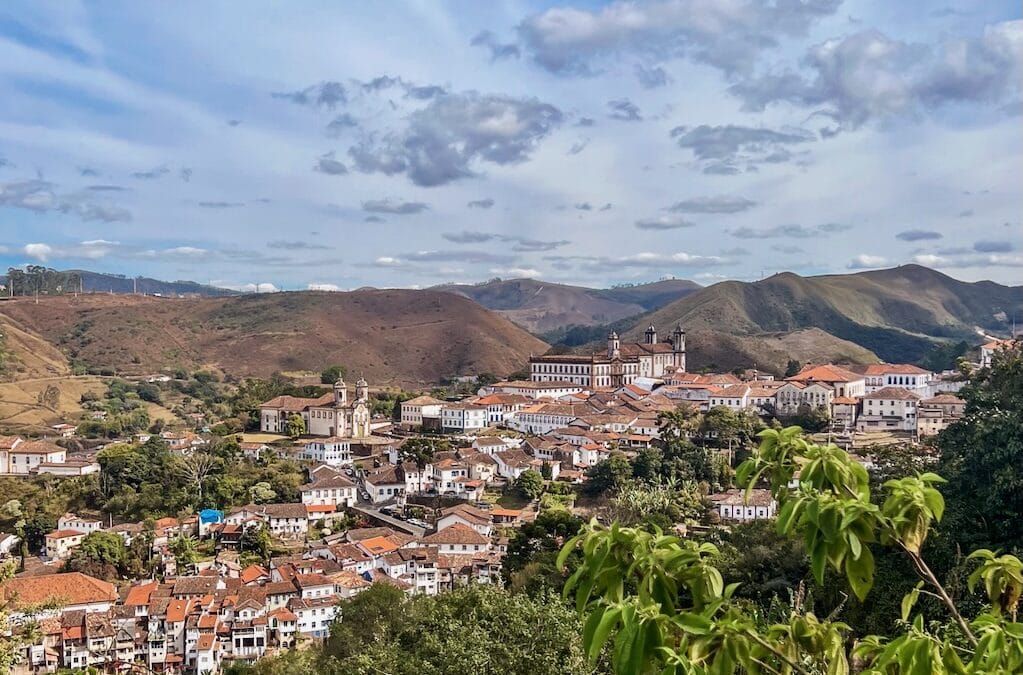
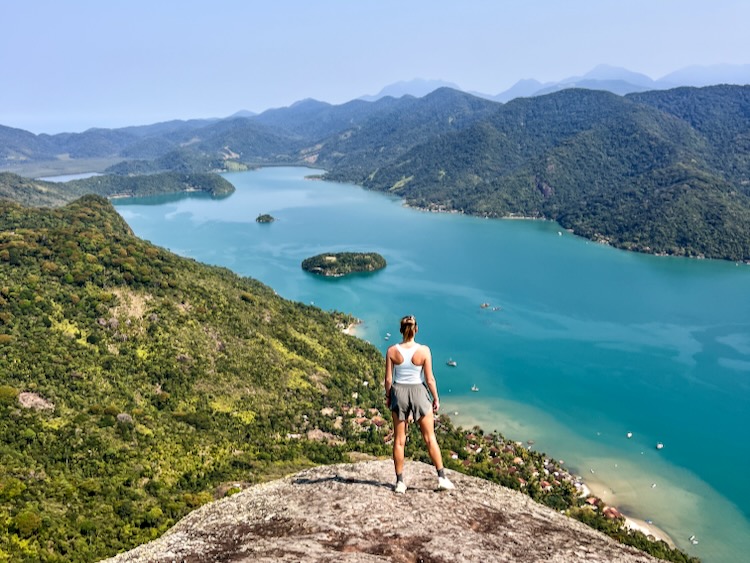
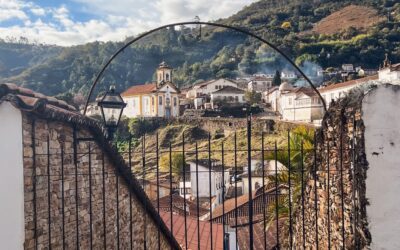
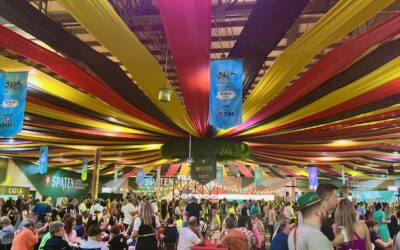
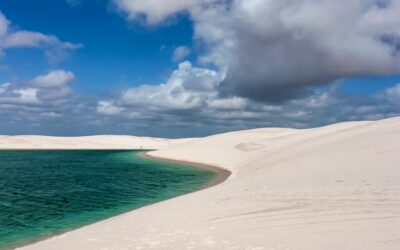
0 Comments